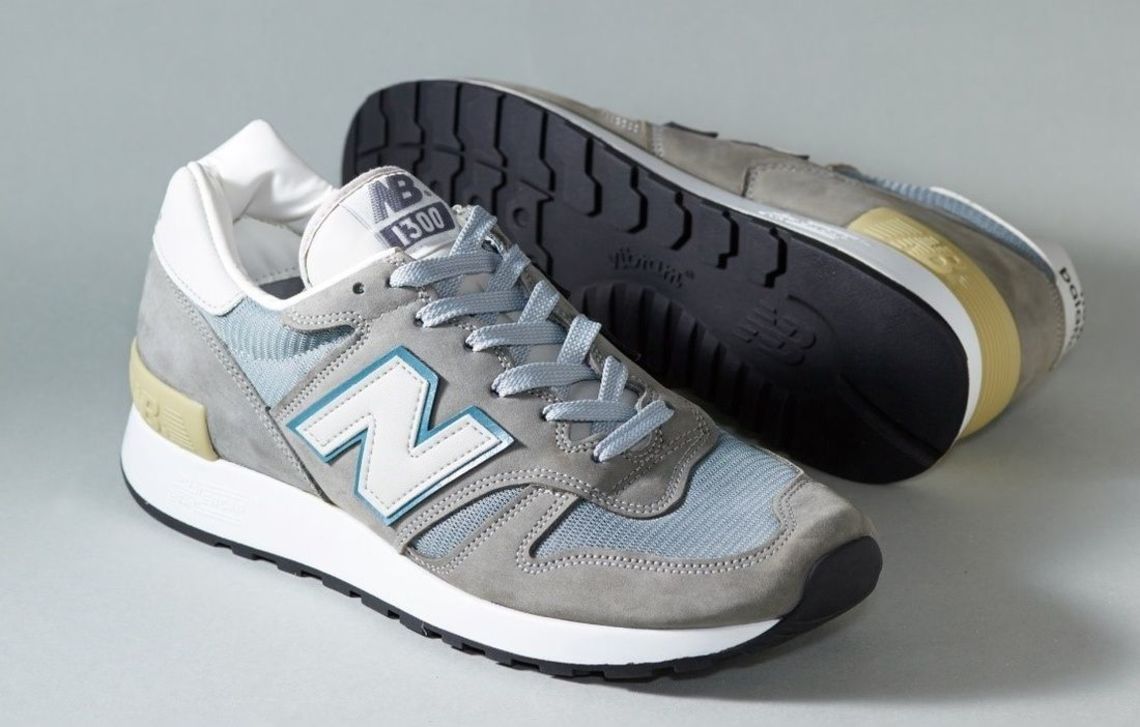
Can a high-priced pair of sneakers costing 32,000 yen be sold out immediately, or even cause people to rush to apply for a lottery just to get a ticket to purchase them?
The answer is yes, and the sneaker that caused such a phenomenon was New Balance’s M1300, launched in Japan at the end of March.
When the M1300 model was first introduced back in 1985, the price was 130 dollars in the US and 39,000 yen in Japan. Ever since then, the model has been reissued five times--in 1995, 2000, 2005, 2010 and 2015--creating a fierce competition each time among sneaker fans.
There’s no doubt that the popularity of the M1300 is supported by its superior features and quality, as it has been described as the Rolls Royce of the sneaker industry. New Balance itself is known for its commitment to quality as it starting out as a manufacturer of orthopedic shoes and arch support insoles and maintaining the “Made in the USA” label on some of its products even today.
When New Balance first began the sale of its licensed products in Japan, the products were approved for sale only after they were tested for running by Jim Davis, chairman of the company in the United States.
Pass on the legendary sneaker story
The M1300 has become a legendary sneaker among its fans. But with only a limited number of enthusiasts, there is no way a global brand that is targeting the mass market can sustain its business. So, what sort of marketing strategy has New Balance implemented to share the enthusiasm among its core fans with a greater number of consumers?
To begin with, New Balance focused on the fact that a large portion of sneaker enthusiasts were men. The popularity of M1300, too, was supported by male enthusiasts until its reissued model in 2010. Therefore, with the latest model, New Balance tackled a new challenge to target women and kids as well.
“This time, we launched the M1300 kids’ model for the first time,” Mr. Ken Suzuki, General Manager of the Marketing Department, New Balance Japan, said. “And, even though the M1300 had always been a unisex model, we further expanded the lineup of smaller sizes to target women as well.”
Behind this strategy, there has been a growing popularity of New Balance sneakers as fashion items among women. Men who were originally New Balance enthusiasts have gotten married and inspired their wives and children to wear New Balance sneakers. Previously, the legendary sneaker was for dad alone to get excited about and to speak out his whole stock of knowledge--but now it’s a fashionable item for the entire family.
Despite New Balance’s strategy of targeting the entire family, only a lucky few will be able to purchase the M1300, as the model is not mass-produced because of its commitment to quality. So regardless of how quickly the limited-edition shoes are sold out or how popular they become, these factors will not directly expand the business.
According to Mr. Suzuki, New Balance emphasizes the importance of passing on the legendary sneaker story. It is their key marketing strategy to have people talk about the existence of this sneaker and share the story behind it, even with those who could not or did not purchase a pair.
Products today are said to have been commoditized to an ultimate level, and sneakers are no exception. A marketer needs to create an opportunity to share the story or values behind its brand with consumers, or else the brand cannot differentiate itself and will be caught in a price competition.
It is an issue for many marketers as to how to expand the rich,valuable experience of a limited number of people to a larger audience. Recently, temporary installation of pop-up shops has become popular among mass-products manufacturers in foods, beverages, cosmetics and other industries.Their purpose is to attract visitors to experience the brand’s worldview.
Reaching broader consumers
But even with pop-up shops, the number of visitors is limited to a few hundred or a few thousand, which is insufficient when a brand is targeting consumers nationwide. Marketers are faced with the next challenge on how to expand the reach of a limited few people who have actually gotten in touch with the brand.
As a sports brand manufacturer, New Balance has been aggressive in sponsoring marathons and other sporting events. Here, too, the company needed to think of a way to broaden the brand’s worldview, which had only been experienced by a limited number of participants.
As a trial, New Balance began offering a new service at the 9th Shonan International Marathon held in Kanagawa Prefecture in November 2014. The service, called “SOCIAL_MARATHON in Shonan International Marathon,” enabled runners to automatically upload their split times to Social Networking Service (SNS) and create a “MY RACE MOVIE,” summarizing their own records of the race.
New Balance began offering automatic uploading service of the runners’ time records to SNS in the Shonan International Marathon race in 2013. The new “MY RACE MOVIE” service in 2014 additionally offered automatic uploading of the runners’ split times, images of Shonan scenery, and their friends’ cheers sent via SNS.
“We can offer a deep brand experience only to a limited number of people, but using technology, an individual experience is widespread to a larger audience. I believe that a clever use of technology will be a major factor determining a marketing success,” Mr. Suzuki said.
The “SOCIAL_MARATHON” service utilizes the management database of IC tips worn by the runners to record their running time. When runners pass each recording point, their split time is automatically sent and uploaded on SNS. An individual’s analog experience such as running can be spread to a mass audience by using digital technology.
Consumer spending today is said to be shifting from products to services. Brand marketers’ success may depend on how creative they can be to broaden the experiences of some people to a mass audience.
